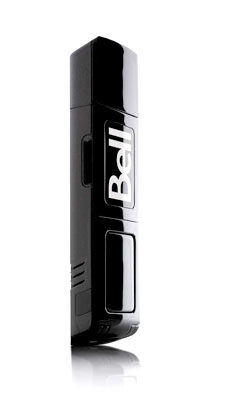 I got a mobile internet stick from Bell so that I could have a little internet on the go. And... it works really quite well. The model I got was the Bell U727 made by Novatel. It worked right away under Windows (as expected) but I was really hoping to get it working under Debian Linux as that's my preferred working environment. And so my adventures began... A friend had said that he had got a similar stick working using KPPP. So that seemed like a good place to start.
I got a mobile internet stick from Bell so that I could have a little internet on the go. And... it works really quite well. The model I got was the Bell U727 made by Novatel. It worked right away under Windows (as expected) but I was really hoping to get it working under Debian Linux as that's my preferred working environment. And so my adventures began... A friend had said that he had got a similar stick working using KPPP. So that seemed like a good place to start.
After much futzing around with KPPP, I abandoned it on the strength of some forum encouragement that wvdial is the way to go being the way to go and if you're going to mess around you may as well mess around on the command line.
How I made WvDial work!
You need to update the /etc/wvdial.conf file to read as below. Provided that your modem is indeed located at /dev/ttyUSB0, easiest way to find out if that is the case. unplug is, from the command line run "ls /dev/tty*" then plug it in and run the same command and see if what has changed, the new address is new stick. (A lot of people on the Ubuntu forums have mentioned that this device gets mounted as a memory stick and that the mounted memory stick needs to be ejected first, this wasn't the case for me running Debian.)
Here are the settings for the working /etc/wvdial.conf
[Dialer Defaults]
Modem = /dev/ttyUSB0 Username = '' Password = '' Phone = #777 Init1 = ATZ Init2 = ATQ0 V1 E1 S0=0 &C1 &D2 +FCLASS=0 Dial Command = ATDT Abort on No Dialtone = on Carrier Check = on Auto Reconnect = on Check Def Route = on Auto DNS = on Idle Seconds = 0 Stupid Mode = on Dial Attempts = 1 Ask Password = off
then you'll need to close up that file and... at the command line type
~$ wvdial
Generally I get some output that looks like
--> WvDial: Internet dialer version 1.60
--> Cannot get information for serial port.
--> Initializing modem.
--> Sending: ATZ
ATZ
OK
--> Sending: ATQ0 V1 E1 S0=0 &C1 &D2 +FCLASS=0
ATQ0 V1 E1 S0=0 &C1 &D2 +FCLASS=0
OK
--> Modem initialized.
--> Sending: ATDT#777
--> Waiting for carrier.
ATDT#777
CONNECT
--> Carrier detected. Starting PPP immediately.
--> Starting pppd at Sun Feb 28 09:19:56 2010
--> Pid of pppd: 28980
--> Using interface ppp0
--> pppd: 0[02]n�
--> Q [10]�P [01]
--> pppd: 0[02]n�
--> Q [10]�P [01]
--> pppd: 0[02]n�
--> Q [10]�P [01]
--> pppd: 0[02]n�
--> Q [10]�P [01]
--> local IP address 70.28.210.69
--> pppd: 0[02]n�
--> Q [10]�P [01]
--> remote IP address 68.182.192.100
--> pppd: 0[02]n�
--> Q [10]�P [01]
--> primary DNS address 204.174.120.46
--> pppd: 0[02]n�
--> Q [10]�P [01]
--> secondary DNS address 204.174.120.45
--> pppd: 0[02]n�
--> Q [10]�P [01]
and then if I check my connections by typing at the command line
sudo ifconfig
I see a new entry, ppp0 and there is a small amount of traffic running on it.
Gotchas
One possible gotcha I found is that if you attempt this while my wireless is on (not even connected, but just on) it still connects fine but my browser doesn't connect to the internet. The solution for me was to switch the wireless off then run wvdial. I've only had to do this on 1/3 machines that I've set up my Bell internet stick for.
U727 Performance
An interesting side note, is that another friend of mine was visiting a fairly remote part of BC and tried a newer model side by side with the U727 and found that the newer model (Sorry I don't know the model). The newer model was unable to maintain a service signal but the U727 worked without problem. I guess the external antenna really does improve reception!
I've used the stick in a number of remote areas where the reception is really quite weak. 1 or two bars on a cell phone and had reasonably good success. Sometimes it is quite slow, but in general it has been perfectly adequate for what I need and in places that aren't remote (one bar of reception areas) its relatively zippy.